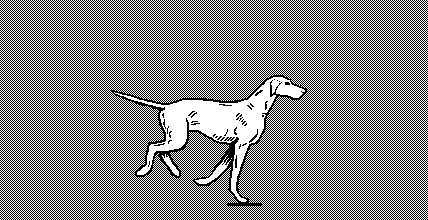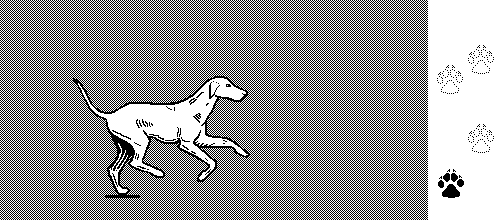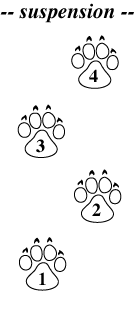A
transverse gallop (right lead) is shown in the above cartoon. The step sequence of the transverse gallop is shown at the right. The transverse gallop (normal gallop; horse gallop) is a four-beat, single suspension gait. The fore and hind limbs of the transverse gallop exhibit a similar pattern, e.g., left hind & right hind; left fore & right fore [right lead].
The
leading forelimb is the one that supports weight just before suspension. The leading forelimb makes a longer stride and remains in contact with the ground for a longer time than the non-leading forelimb. The hindlimb that impacts the ground immediately following suspension is diagonal to the leading forelimb.
Hind limbs supply the major propulsive force, and the hindlimb that lands second is more powerful in providing forward and upward thrust. The hindlimb that impacts the ground first following suspension is extended forward under the body and is more prone to injury because of the shock involved in catching the falling body weight.
The
canter leads naturally to the transverse gallop (by splitting the diagonal of the canter so the gait becomes four-beat). The stride length of the gallop is about twice that of the canter, as increased momentum extends suspension distance along with the reach of each limb.
The gallop is used for speed, but it is a fatiguing gait. The transverse gallop is the primary gallop of the horse as well as cattle and other large ungulates. The trunk is held relatively rigid and undergoes a cranial-caudal rocking action. The dog and other carnivores also exhibit the transverse gallop but the
rotatory gallop is their fastest gait.





